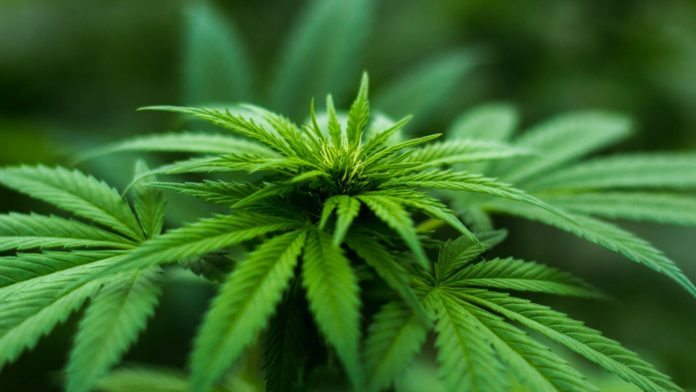A controversial study has demonstrated “consistent evidence” for a dose-dependent relationship between cannabis and population rates of psychosis for the first time. The paper has been well-received by some experts, but others consider the conclusions of the authors to be deeply flawed.
The research found a correlation between the daily consumption of cannabis and an increased risk of psychosis, a debilitating mental health condition. This is especially pronounced with strains containing higher concentrations of the psychoactive component tetrahydrocannabinol (THC).
Previous research has shown some evidence of a causal link between cannabis and psychosis, but until now, it was unclear whether trends in cannabis use have an effect on population-level psychosis rates.
“Our findings are consistent with previous studies showing that the use of cannabis with a high concentration of THC, also known as skunk-like cannabis, has more harmful effects on mental health than weaker forms,” says lead author Marta Di Fiorti from King’s College, London.
“The more cannabis you consume the more likely you are to develop a psychotic disorder,” she adds.
Psychosis involves losing touch with reality and is present in major psychological conditions such as bipolar disorder and schizophrenia. A psychotic episode can be terrifying for both the sufferer and loved ones, who may witness all manner of extreme behaviours.
The research comes at a time when individual states and countries worldwide — including Canada — have controversially liberalized cannabis to varying degrees, and raises questions about the potential consequences for public health, especially if more potent strains enter the market.
Notoriously potent European strains illustrate strongest correlation
As part of the study, researchers examined data on 901 individuals aged between 18-64 who received their first diagnosis for psychosis between May 2010 and April 2015. The participants were sourced from mental health institutions from 11 European cities and one site in Brazil and were compared against a control group of around 1,200 healthy individuals to gain insight into the risk factors for psychosis.
Information on the THC content in cannabis local to individual cities was sourced from published data, and this allowed researchers to estimate the potency of what the participants were consuming. The team considered high-potency cannabis (HPC) to have a THC concentration greater than or equal to 10%, while anything below that was considered low potency.
Even after adjustment for other factors, daily users in all locations were found to have, on average, triple the risk of developing a fresh episode of psychosis when compared against control participants with no cannabis history. The rate escalated to five-times if HPC was involved.
HPC use was found to be a strong predictor of first-time psychosis, and three study cities, London, Paris, and Amsterdam, well-known for its widespread availability, all had higher psychosis rates. ‘Super skunk’ style cannabis averages at 14% THC content and makes up 94% of the street market in London. In the Netherlands, THC content up to a whopping 67% can be found in products like ‘Nederhash’.
The authors estimated that 43.8% of new psychosis cases in Amsterdam were likely attributable to daily use, and 50.3% were linked to the use of HPC, whereas the overall study average was 20.4% and 12.2%, respectively.
By contrast, southern European cities located in countries like Spain and Italy had a lower average of THC content (<10%), mainly with the popular ‘herbal style’ cannabis, and the corresponding new psychosis rates were also lower in the results.
Starting consumption aged 15 or younger was also found to mildly increase the risk of developing psychosis.
Average potency is rising, along with increased risks
The rising average strength of cannabis in Europe and North America is a relatively recent yet accelerating phenomenon. A separate study found that the average potency across both regions is 17.1% – up from 8.9% in 2008.
Another study found that the proportion of cannabidiol (CBD – the non-psychoactive component in cannabis) declined between 1995 and 2014 from 0.28% to 0.15%. This may seem insignificant, but not so according to Di Fiorti: “CBD, which we refer to as the ‘good guy’ component of cannabis, has no psychoactive component and has even been shown to offset the psychoactive components of THC in experimental studies.”
Though this research has been received by some field experts as highly significant, it does not prove causality, and others are dubious about the findings. Psychosis is highly complex, and many factors including genetics and the environment play a role.
A response article by researchers at the University of Montreal was also published in The Lancet, criticizing the study’s findings and pointing out that people with severe mental illnesses may have a higher propensity to use cannabis as a form of self-medication, so the direction of causality may be the other way around: higher schizophrenia risk caused a higher likelihood of cannabis use, but there was little evidence that cannabis use raises schizophrenia risk.
“Attributing this complex multifactorial brain disorder to one environmental factor such as high-potency cannabis use seems counterintuitive, especially given that 33.6% of the patients assessed by Di Forti and colleagues had never used cannabis,” said the authors in their response.
The University of Wisconsin’s Krista M. Lisdahl commented to NPR that future research comprising longterm data on individuals, among other things, would be needed: “You need twins in the studies, you need genetic information, among all other kinds of data,” she says.
For Di Fiorti, she considers it best for people to avoid HPC until future research develops a better understanding of the risks: “If you decide to use high-potency marijuana, you should bear in mind: psychosis is a potential risk.”




































